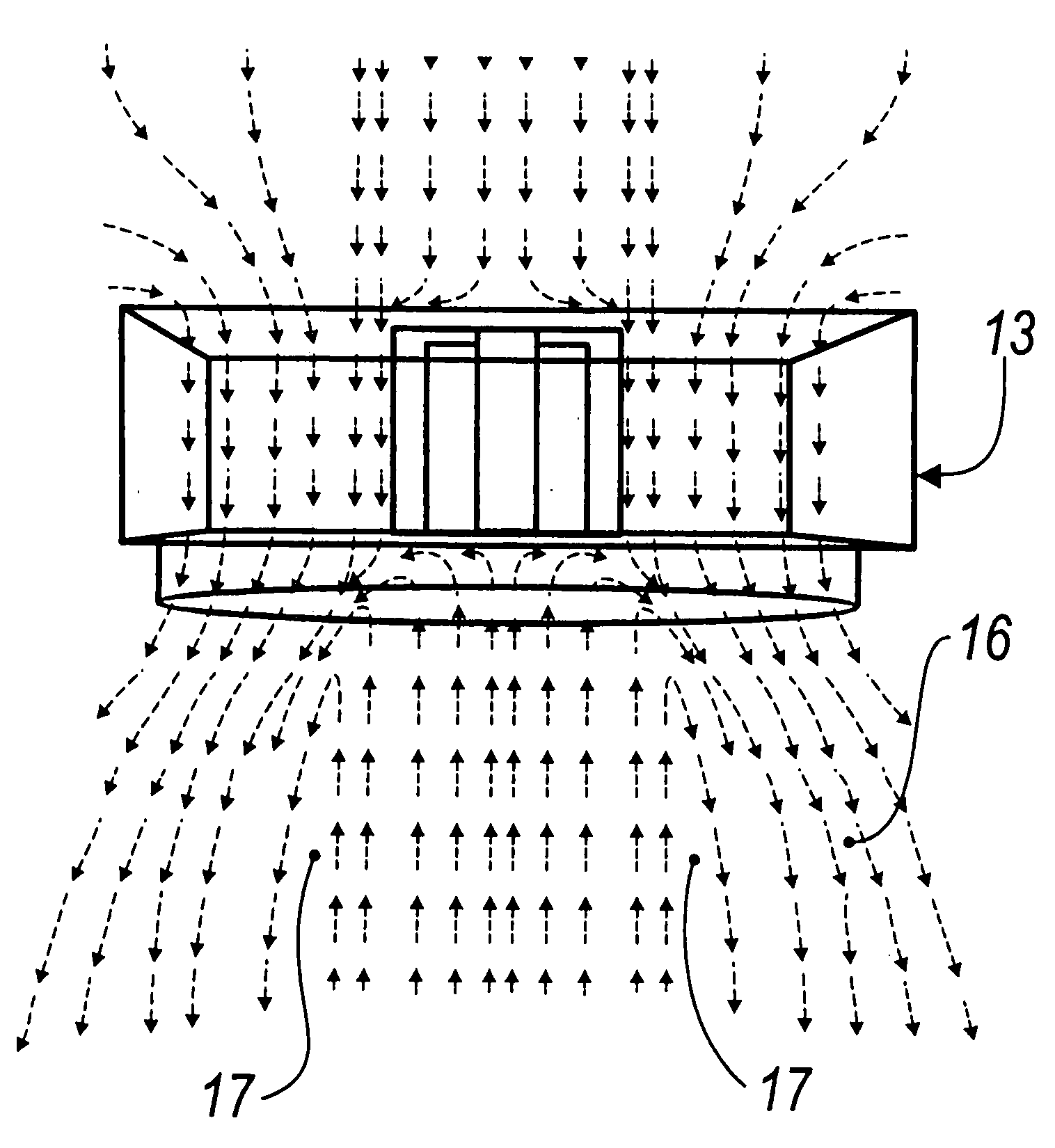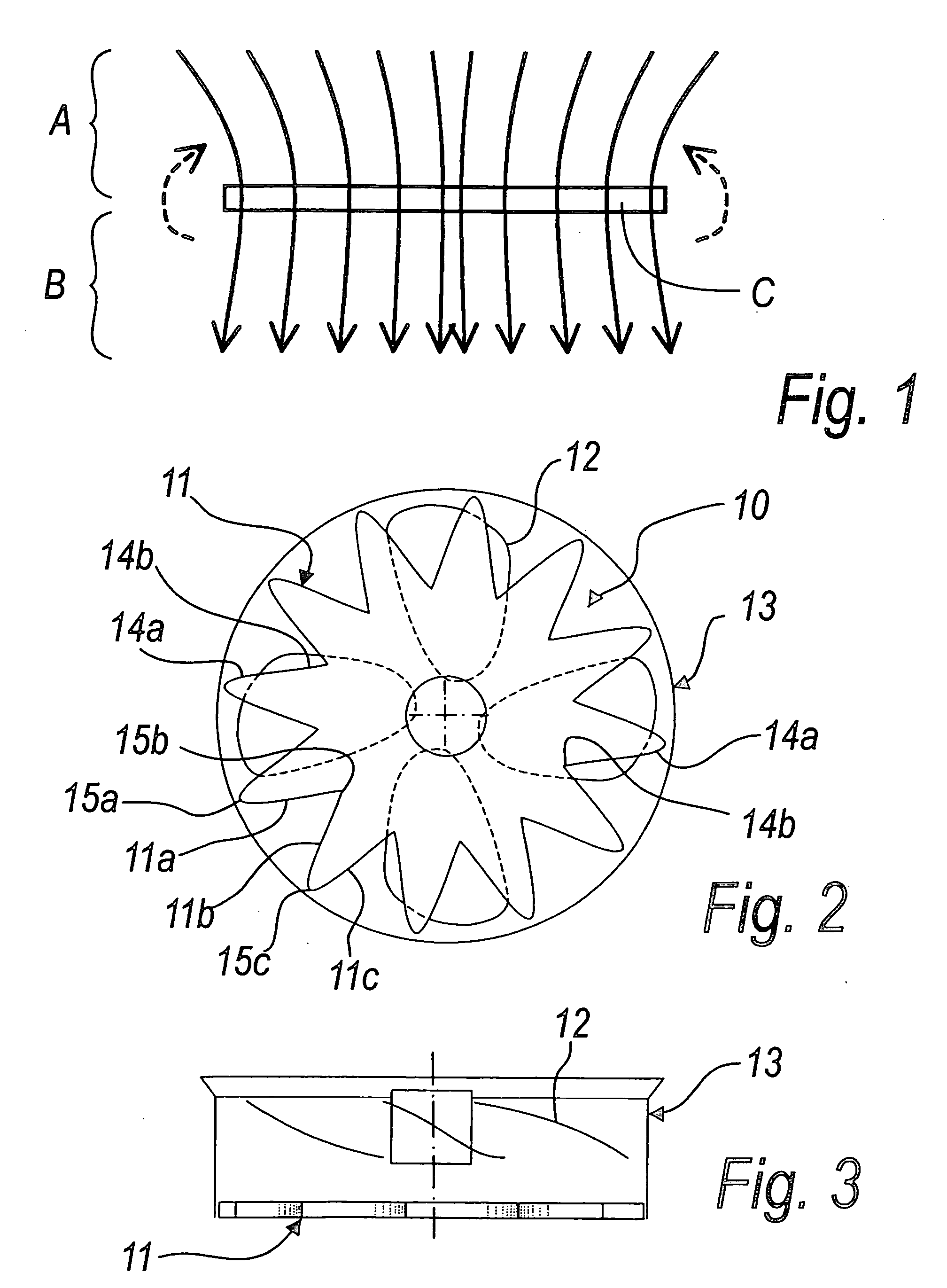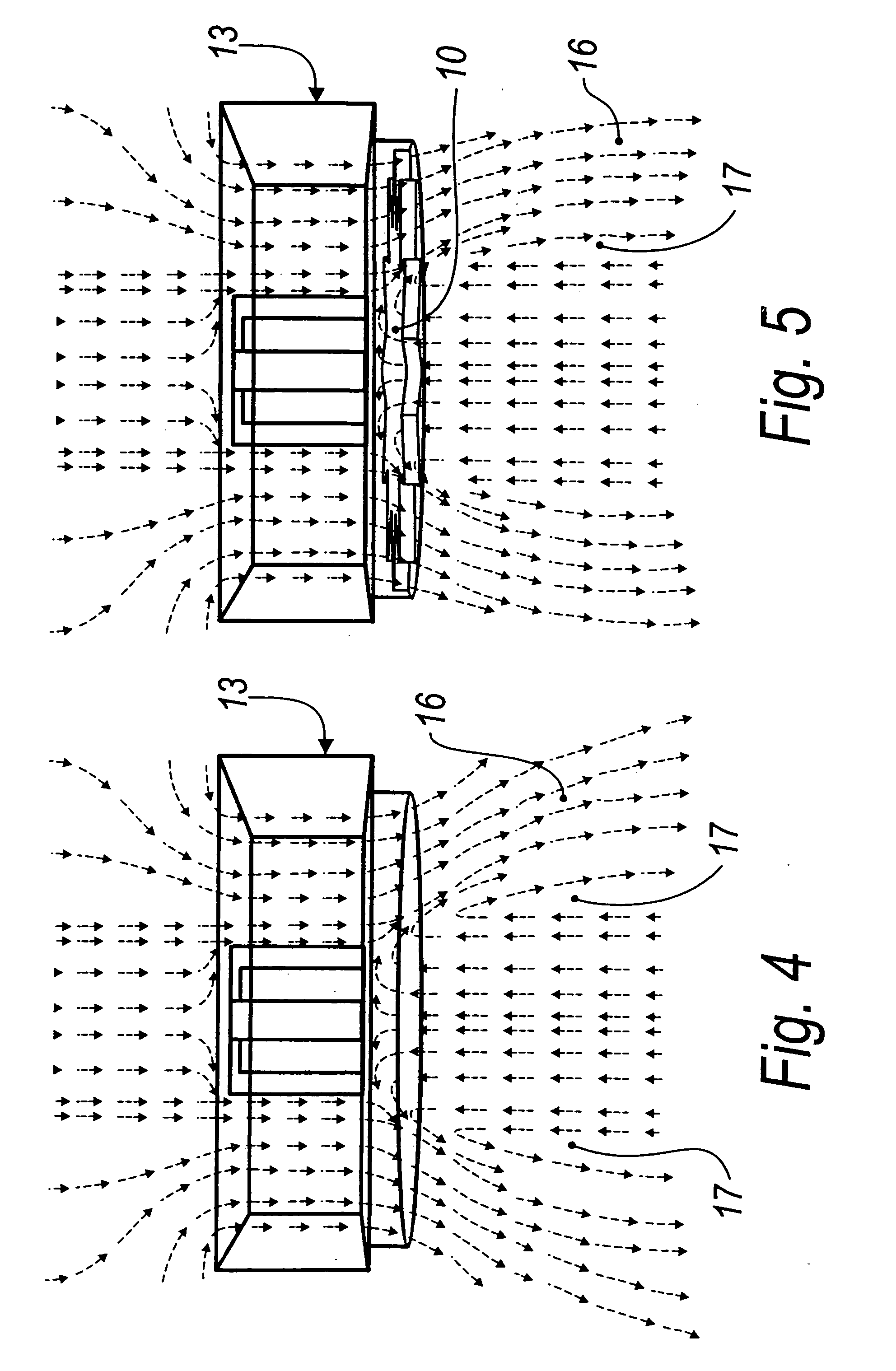Flow straightener for axial fans, particularly for conditioning systems
a technology of axial fans and straighteners, which is applied in the direction of wind turbines, liquid fuel engines, wind turbines with parallel air flow, etc., can solve the problems of parasitic recirculation, inherent limitation of a generic axial fan, and limitations of the output air jet shape of the axial fan used for cold air distribution in enclosed spaces
- Summary
- Abstract
- Description
- Claims
- Application Information
AI Technical Summary
Benefits of technology
Problems solved by technology
Method used
Image
Examples
first embodiment
[0038]With reference to the figures, a flow straightener for axial fans particularly for conditioning systems according to the invention is generally designated by the reference numeral 10 in its first embodiment, which is shown in FIGS. 2 to 5.
[0039]The straightener 10 is constituted by a plurality of flat deflection walls, of which three 11a, 11b, 11c are shown in FIG. 2 by way of example and form a substantially star-shaped profile or element 11.
[0040]The profile or element 11 has a central axis thereof and is adapted to be arranged coaxially to an impeller 12 of an axial fan 13 with which it is associated and proximate to said impeller.
[0041]The thickness extension of the profile 11 lies substantially in the direction of the axis of the impeller 12 and therefore vertically in the case of an axial fan of a ceiling-mounted conditioning unit.
[0042]The flat walls 11a, 11b, 11c are each constituted by a metallic lamina which is joined by its ends 14a and 14b to a contiguous additiona...
second embodiment
[0046]In the straightener according to the invention, shown in FIG. 6 and designated by the reference numeral 110 therein, the vertices 115a onward are substantially angular, and a substantially straight wall 111a and a curved wall 111b join thereat.
third embodiment
[0047]In the straightener according to the invention, shown in FIG. 7 and designated by the reference numeral 210 therein, the vertices 115 are curved.
[0048]The profile or element 11, 111 and 211 which provides the straightener according to the invention is obtained by bending a strip of metal plate.
[0049]As an alternative, the straightener 10, 110, 210 can be obtained by molding plastic material.
[0050]FIG. 4 is a side view of a measurement of the behavior of the air flow determined by an axial fan 13 without a flow straightener.
[0051]The conical shape, which opens downward, of the profile 16 of the faster air flow and the extent of recirculation regions 17 are clearly visible.
[0052]FIG. 5 illustrates the same side view as FIG. 4, related to the axial fan 13 provided with the straightener 10 according to the invention.
[0053]In said figure, the profile 16 of the faster air flow is substantially cylindrical and the recirculation regions 17 are greatly reduced.
[0054]In practice it has ...
PUM
 Login to View More
Login to View More Abstract
Description
Claims
Application Information
 Login to View More
Login to View More - R&D
- Intellectual Property
- Life Sciences
- Materials
- Tech Scout
- Unparalleled Data Quality
- Higher Quality Content
- 60% Fewer Hallucinations
Browse by: Latest US Patents, China's latest patents, Technical Efficacy Thesaurus, Application Domain, Technology Topic, Popular Technical Reports.
© 2025 PatSnap. All rights reserved.Legal|Privacy policy|Modern Slavery Act Transparency Statement|Sitemap|About US| Contact US: help@patsnap.com



